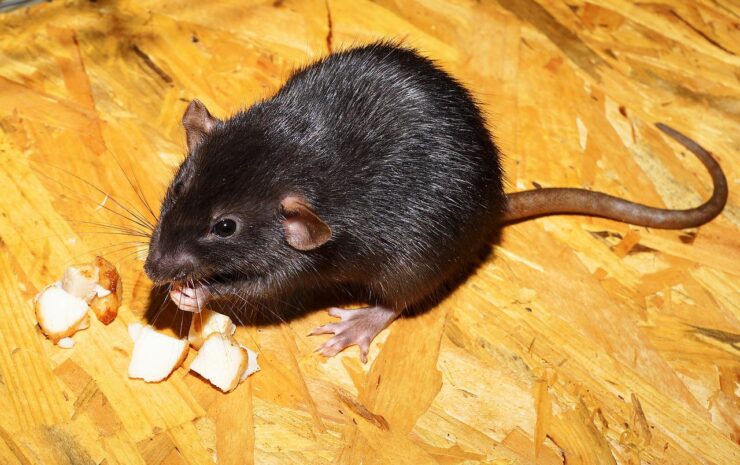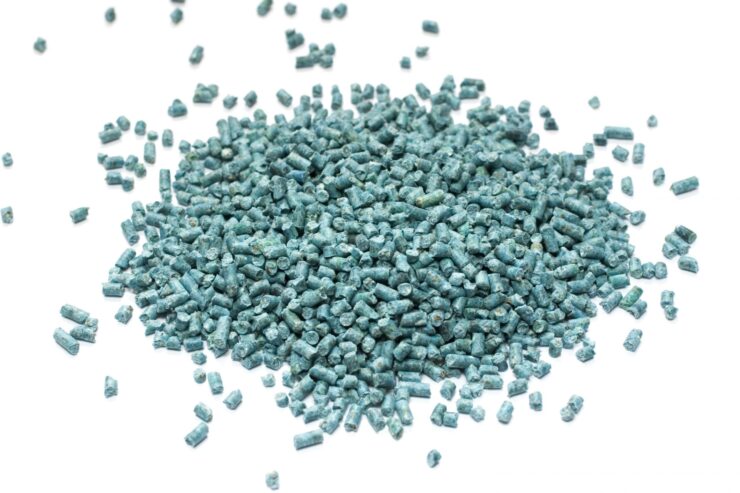The internet offers many DIY methods for how to get rid of rats, most commonly with rat traps. Indeed, if you are dealing with only one or two rats, you can likely handle them yourself. However, rat populations are usually larger than expected, especially if you see them during the day. They also multiply quickly when they have access to food and water. If you have a rat infestation, the best solution for getting rid of them is to contact a local pest control professional, not just set out a bunch of rat traps. Alone, the traps probably won’t get rid of the rats.
Pest control professionals will handle the problem right the first time before it gets out of hand. They have the methods, equipment, and training to handle. And they have resources to eliminate them humanely, too, which home- or business owners may not be able to accomplish themselves.
Getting rid of rats is essential to achieve quickly because rats spread disease. The CDC reports rodents spread more than 35 diseases worldwide. Besides disease, rats actively cause damage. They gnaw on and chew through wiring in buildings and vehicles. Rats also chew through wood and other material they run into, such as paper, cloth, books, and insulation. And they make nests in crevices and enclosed areas, which can stifle ventilation and attract more pests.
Whether you hire a pest control professional or take on the infestation yourself, the steps to getting rid of rats are the same. And successfully killing rats, of course, depends first on understanding the rodent.
How To Get Rid Of Rats In Your House Fast?

If you are serious about rat pest control, you will want to find a professional rat exterminator near you. Pest will perform the following steps to eliminate mice and rats while avoiding harm to children and pets.
Inspect Your Home For Rats
The first step to getting rid of rats is to perform an inspection. The inspection is essential for several reasons.
Inspections confirm or reveal the pest. Accurately identifying the pest is vital because methods for eliminating pests differ depending on the pest. A rat and a mouse, however similar they may appear, behave differently and require different techniques and tools to eliminate. Inspections reveal food sources and access points
It’s relatively easy to tell if you have rats, even if you don’t see the animals. Signs of a rat infestation include burrows, runways, grease marks, urine stains, rodent sounds, rodent odours (a musky scent), gnaw marks, tail drags and footprints in dusty areas, and faecal pellets. Brown rat faecal pellets have blunt ends and average between ½ and ¾ in. Other signs include chewed-out holes. Rat holes are two in. or larger in diameter.
Once a rat population is confirmed, inspectors then look for their nest. To aid them in this task, they might use a UV rodent tracker or other UV light source to find urine, which glows under UV light. If the inspector has difficulty finding the rats’ nest, they might use a rodent-fluorescent-tracking powder to track them. UV tracking powder is nontoxic and catches onto rats’ bodies. After a few days of placing the powder, an inspector can return and learn the rats’ movements better.
Exclude Rats From Your Home

The second step pest control professionals and DIY maintenance workers employ in getting rid of rats is exclusion. Killing rats is no good if more can invade. Exclusion involves cutting off rats’ points of entry into a building. If rats live outdoors, this alone may be enough to eliminate them from your premises. To exclude rats, all holes ½” and more considerable need to be covered or filled with mesh, hardware cloth, metal flashing, foam, or other material. All holes larger than ¼” should be filled and covered, as mice can get in these smaller holes.
Common access points into a building include vents, holes near cabinets, and closet doors leading to the outside or crawl spaces. Other entry points include pipes, cracked foundations, holes around windows and doors, and missing screens or covers.
Also crucial in the exclusion process is eliminating (as much as possible) the rats’ food sources. Putting away food, fixing leaks, and sealing waste containers are good ways to prevent rats from making a home on your property.
After the rats’ food and access have been addressed, the next step is to sanitize the area. Garbage will need to be removed, and the landscape should be maintained. Other sanitation considerations include lifting wood piles at least 18 in. off the ground and placing tight covers on all garbage containers and dumpsters.
Eliminate The Rats Professionally
At this point, you or the pest control professional can address the rats directly. Depending on the severity of the infestation, several methods you or the professional may use one of several methods to eliminate the population. Check this site and know more about rat control.
Rat Baits And Rat Traps To Get Rid Of Rats From Your House Fast

By far the most common method of controlling rodents, rat traps and bait traps are relatively cheap ways to address a rat problem. There’s a definite technique to set the traps; it can take several weeks before the traps kill any rats. Rats are brilliant animals, and they are cautious by nature.
Before setting live rat traps, you or the professional you hire will have to set tripped traps with bait along the rat runways and in places they eat. It takes time for rats to trust new objects, and without patience, this method of rat control won’t work.
If you prefer animals not to die, live traps are another method of capturing the rats. However, the CDC warns against live traps for the same reason as glue traps, and these traps will not work well at eliminating large rat populations. They may be good choices to employ if several alpha rats (extra cautious rats) avoid the snap traps.
Ultrasonic Technology
Ultrasonic technology offers a humane, chemical-free way to get rid of rats. It does not kill them but drives them away with sounds inaudible to the human ear. However, while professional ultrasonic products guarantee a reduction in rodent populations, they don’t promise to eliminate the animals.
One of the most common mistakes people make with ultrasonic pest control, says one manufacturer, is that people try and use ultrasonic technology alone to control infestations. Alongside ultrasound, they say people should also use exclusion and sanitation techniques. The manufacturer says that people should also use baits and traps in conjunction with ultrasound.
Rodenticides

For a more extensive rat infestation, it’s safer and more effective to contact a local pest control company in this situation. Traps and baits may not be enough, and professionals might have to employ rodenticides. Professionals know how to handle these chemicals and can apply them in the safest manner possible.
Rodenticides include grains, seeds, nuts and other foods that contain chemicals lethal to mammals. Most are used in bait traps or bait stations. Rodenticides are usually employed when other methods of eliminating rat populations have failed or when the population is enormous. Many rodenticides exist, and various techniques must be employed to poison rats with rodenticide to kill them successfully.
So, what are you waiting for? Keep your house rats free by following the methods.

